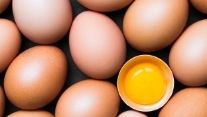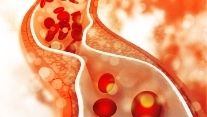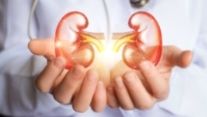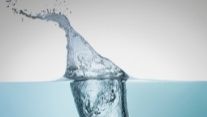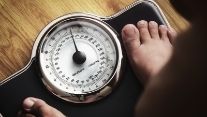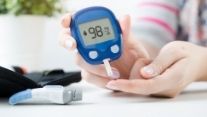Our body requires cholesterol to build healthy cells. It is a waxy substance that is manufactured by our liver and sent out to other parts of the body for cell membranes and hormone production. According to the Indian Heart Association, the ideal level of cholesterol for an average person should be between 100 and 129. If the level is above 160 mg/dl, it is considered as being borderline high. Healthy levels of cholesterol are needed to build cells as a high cholesterol level can cause fatty deposits in our blood vessels. Which in-turn leads to arterial plaque.
It is a common problem among South Asians due to a lack of physical activity, genetic risks, and poor dietary habits. The chances of young people dying from heart disease get higher to a 40-point increase in their total cholesterol levels. Total cholesterol levels and LDL are higher in Indians in comparison to other Asians.
Let’s first develop a detailed understanding of common signs and symptoms of clogged arteries. As plaque continues to develop in the arteries, the following signs and symptoms are likely to occur:
- Chest Pain (Angina)
A common sign of angina is feeling tightness in your chest. The sensation might be as if a person is standing on your chest. The pain usually occurs on the left side of your chest and is triggered mostly by various emotions or physical stress. It usually stops a few minutes after the stressful activity is halted. In women, it is felt briefly in the arm, back or neck.
- Loss of Vision in One Eye
Carotid arteries are responsible for supplying blood to our eyes. A blockage may result in either blurry vision or temporary loss of sight in one eye.
- Shortness of Breath
When the blood supply is not meeting your body’s requirements, you may experience shortness of breath.
- Cold Feet
Cold feet can occur when narrowed arteries reduce the amount of blood flow that goes to our limbs. Another sign of this is poor healing of your wounds and a weak pulse.
- Fatigue
Fatigue can occur due to low oxygen levels in the blood. It is more prevalent in women.
- Stroke
The accumulation of plaque in the arteries narrows blood flow and deprives parts of our brain of oxygenated blood. Our cells begin to die due to a lack of oxygen, which causes a thrombotic stroke. In such cases, even medications are not helpful.
Diagnosis of Arterial Plaque
The following tests are conducted by a doctor to check for these blockages:
- CT scan
- Cholesterol screening
- MRI scanning
- Blood tests
- X-ray of your chest
- Ultrasound
- Echocardiogram
- Electrocardiogram
Types of Cholesterol
Below are the types of cholesterol:
Low-Density Lipoprotein (LDL)
It is also referred to as “bad” cholesterol. High levels of LDL can contribute to the risk of getting a heart attack or a stroke. The two types of fats linked to LDL cholesterol levels are trans fats and saturated fats. It is available in products that come from animals, such as milk, cheese, butter, and various fried foods as well.
High-Density Lipoprotein (HDL)
It is also referred to as “good” cholesterol because it carries away other types of cholesterol, such as LDL, away from the arteries. The collected cholesterol is carried off to the liver and is later eliminated from the body. It is also believed that high HDL levels help to reduce the risk of heart disease.
What Affects our Cholesterol Levels?
Various factors such as the following can affect our cholesterol levels, such as:
- Diet
You should try to reduce the amount of trans fat, saturated fats, and cholesterol in your diet to help lower your blood cholesterol level.
- Weight
Being overweight can increase the risk of not only heart disease, but also your triglycerides. Maintaining your weight will help keep your triglyceride levels lower and your HDL higher.
- Physical Activity
Exercising regularly helps lower total levels of cholesterol. Being physically active for 30 minutes on most days of the week can help raise HDL.
- Age and Sex
Due to aging our cholesterol levels rise. In women, LDL levels are higher than men. This is due to menopause.
- Heredity
Our genes also determine the level of cholesterol our body makes. High blood cholesterol levels can sometimes run in families.
Why a Plant-Based Diet is Best for Lowering Cholesterol?
Many studies have concluded that plant-based diets are more effective in lowering cholesterol levels than any other diet. In 2017, 49 studies were reviewed by researchers to compare plant-based diets with the animal-based one for their effects on cholesterol. It was concluded that plant-based diets lower LDL, cholesterol, and HDL levels. They reduce the LDL by approximately about 15-30%.
Plant-Based Foods that Lower Cholesterol
- Nuts
- Soy proteins
- Beans
- Barley
- Oats
- Wheat germ
- Wheat bran
- Almonds
- Brussels sprouts
Conclusion
After carefully assessing all that has been mentioned, we need to start paying attention to the cholesterol levels in our blood. It can only be achieved if we focus on our dietary intake and alter it. A plant-based diet is the best solution for avoiding arterial plaque. Not only is such a diet nutritious, but, also lowers down our LDL levels while saving us from any possible chances of getting a stroke.















